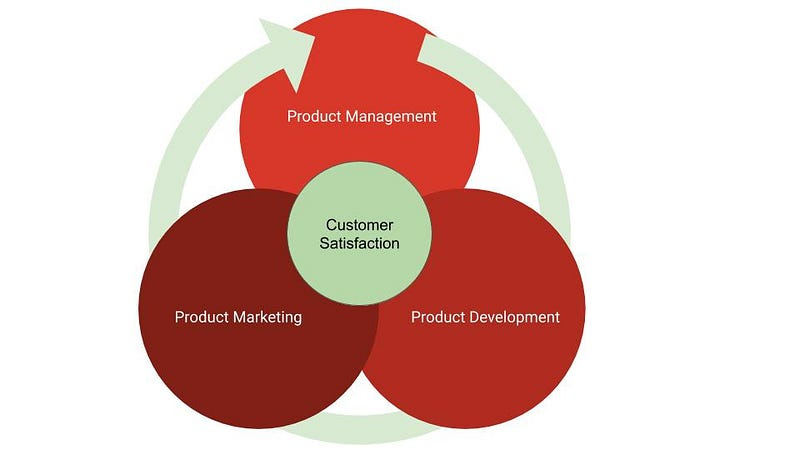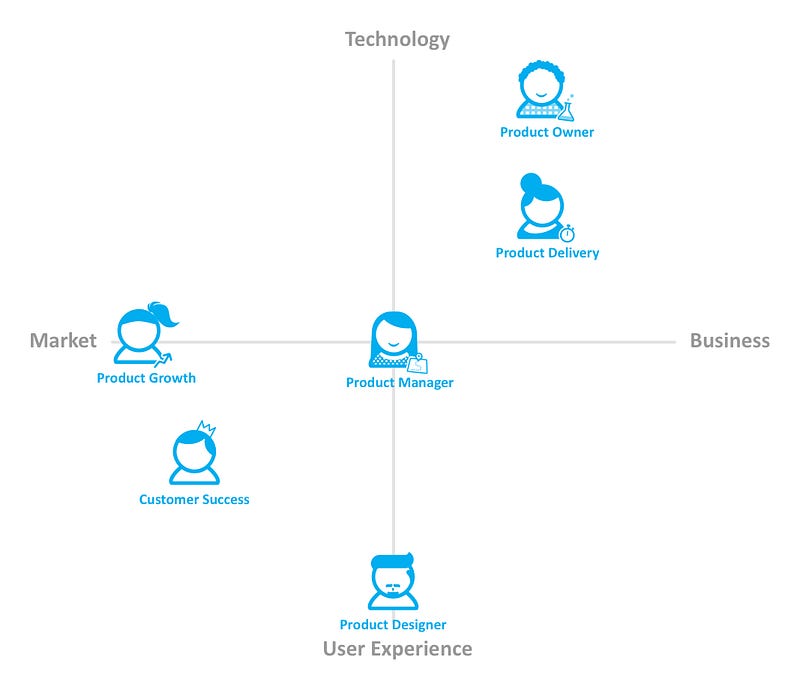Journey to the heart of the Venn
A cocktail napkin captured it all. A white square unfolded to create a company. One vision, one person, unlimited potential, and the start…
Journey to the heart of the Venn
A cocktail napkin captured it all. A white square unfolded to create a company. One vision, one person, unlimited potential, and the start of a journey!
Dreamers, entrepreneurs, founders, start the journey with a blank slate: a vision, pain point, or a desire to make the world a better place.
Realists, executives, caretakers follow the path to profit or refactoring, sometimes making the world a better place.
Genesis starts with the trinity of Product Management, Product Development, and Product Marketing. Captured in a vision, crystallized in a moment, and staged for the future. Each embodied in a product destined to change and evolve, much like a band creating a new album.
Someone holds the vision. Sometimes it’s an individual, sometimes a team. A vision is set to execution by a leader. Limited resources often drive founders to embody all three rolls early in the journey.
The roles and responsibilities:
Product Management for specification (drawn from customer requirements)
Product Development for scaling
Project Marketing for selling
Create a startup mana with these ingredients. Specification, Scale, and Sales. The real startup mana empowers these three critical roles driven by the vision holder who speaks to the heart of the Venn. Don’t be confused by the mantra of many; nail it and scale it. Nailing and scaling is an operational model, not a product plan.
Responsibilities explained:
Product Management:
Specifications capture customer requirements, not the other way around. Build a close and intimate relationship with market pain(s). The product manager drives engagement. Translating external input to team action. Requirements should be supplied by the customer. Or, at least, verified by them. Specifications are a translation to internal customers. While many say requirements are the real source of power, I content that is wrong and why I am writing this post. Requirements lack the necessary and vital execution elements that drive production.
Product Development:
Scale universality of the solution. The scale should address as many customers with the least amount of work possible. The project manager should harness all key stakeholders to validate and execute against specifications. Keep the trains out on time. Deliver on time and a budget or reframe the argument to stage success over time.
Product Marketing:
Selling value. No cure is perfect. Selling what you have, or will have, engages core customers while inviting new customers into the treatment. Eventually, this creates a virtuous cycle. Clear presentation of value, engagement, and commitment that validates an original vision. When things don’t line up, it’s time to close the loop and re-engage the project manager.
In a nutshell: A Requirement is a statement of one thing a product must do or a quality it must have. A Requirement Specification is a collection of the set of all requirements that are to be imposed on the design and verification of the product. The specification also contains other related information necessary for the design, verification, and maintenance of the product.
The journey is for everyone: a startup, high growth, or enterprise team. You just have to be bold. Take the roles and responsibilities seriously, apply them judiciously, and execute them with fidelity.
Stop using “PM” as a catch-all phrase in meetings. There are so many definitions and interpretations of “PM” in the world it’s seldom accurate. Specific roles and well-defined execution help everyone. A one-person band still defines what instruments he is playing, and a conductor signals the sections accordingly. Using “PM” carelessly today is like saying; You and you, play the thing, and the other stuff, with some more of that thing. All the time expecting the music to sound perfect.
The journey from a one-man-band to a conductor is a journey few accomplish in life. It’s no wonder companies fail on execution. As the one-person band, define the roles and responsibilities early, so it’s accessible to transition parts as your group grows. Eventually, with success, you will have a well-tuned orchestra playing your song along the journey.
Takeaways:
One person holds all three roles in a startup. They should be defined and tagged accordingly
As growth brings opportunity, a well-tagged set of duties are easy to assign down the road
Requirements should always be created by, or validated by external customers. Companies sometimes develop requirements for customers, which is not optimal.
Exception: Startups lead the market — requirements developed with customers in mind. With Agile, find the early adopters and match needs to them.
Specifications should be created for, and validated by, internal customers
It’s natural to drive product specifications to an MVP for execution. It’s the product managers role to define short and long product value so project development can execute correctly and in the correct order
Selling what you have is critical at all times. Proper positioning by product marketing ensures what you have meets short term needs while keeping long term value feeding new specifications into the system
Stop using lose definitions for “PM” in every phase of growth. The vocabulary of “PM” is different with each person and company. Using the term without clear definition perpetuates confusion and reduces the contributions individuals can provide
Great resource link: https://blog.prototypr.io/untangling-product-roles-997ad3d9450f




